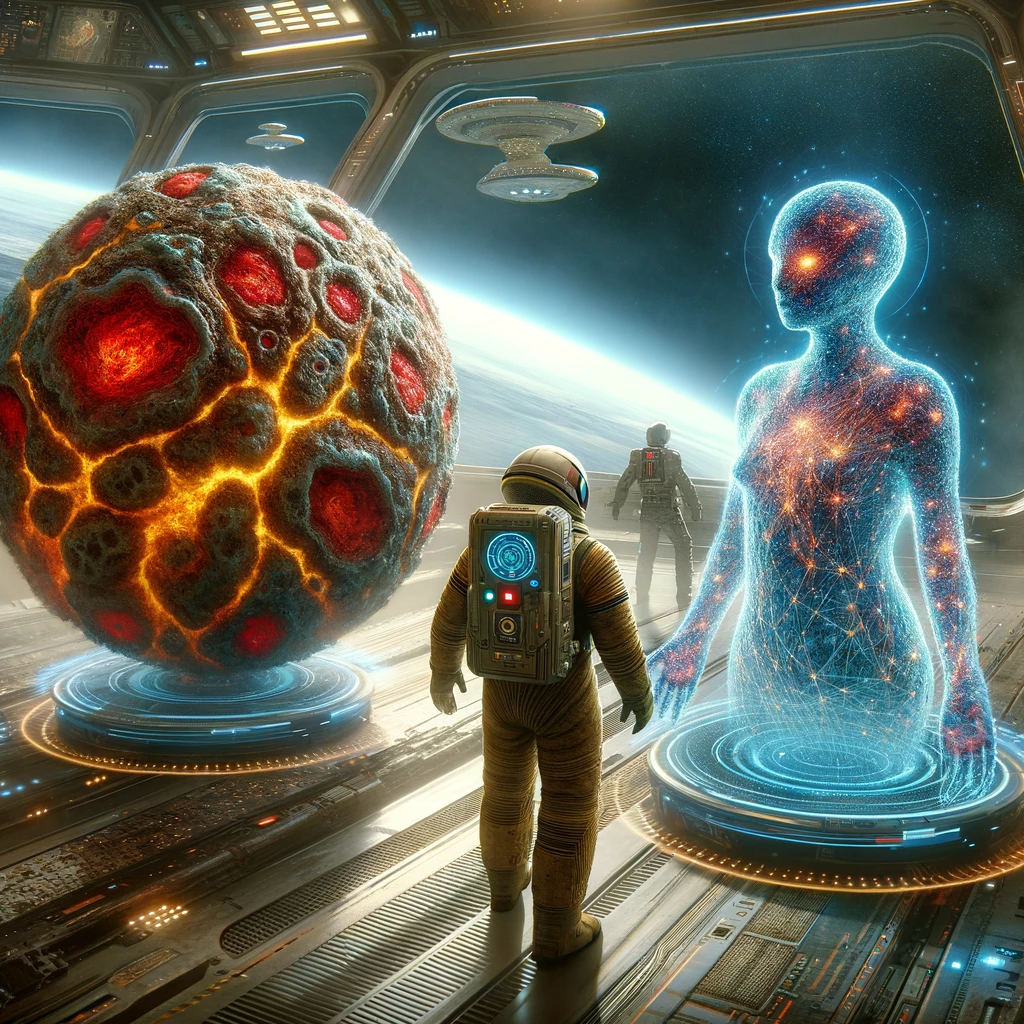Encounters: OpenAI's AI Assistant and Star Trek's Baby Horta

Introduction
In the realm of science fiction, the portrayal of non-human intelligence often challenges our understanding of consciousness and communication. One such example is the baby Horta from the classic “Star Trek” episode “The Devil in the Dark.” Fast forward to the present, and we find ourselves interacting with advanced artificial intelligence, like OpenAI’s AI Assistant. This article explores the intriguing parallels between these two forms of non-human intelligence.
Background
OpenAI’s AI Assistant
OpenAI’s AI Assistant represents a pinnacle in modern technology, harnessing the power of advanced algorithms and machine learning. It understands and generates human language with remarkable accuracy, making it a versatile tool for a myriad of applications. Its development, rooted in years of research, reflects our quest to create machines that can think and learn.
Baby Horta in “Star Trek”
In contrast, the baby Horta introduced in “Star Trek” is a silicon-based life form discovered by the crew of the USS Enterprise. It communicates in a simple yet profound manner, famously conveying its plea for peace with the phrase “NO KILL I.” This encounter beautifully illustrates the challenges and rewards of communicating with an utterly alien intelligence.
Comparative Analysis
Communication Methods
While OpenAI’s AI Assistant interacts using sophisticated natural language processing, the Horta’s communication is primal yet effective. Both highlight the significance of bridging communication gaps between different forms of intelligence, emphasizing understanding over fear.
Misconceptions and Fear
Initially, both the AI Assistant and the Horta were subjects of apprehension. The AI, with its vast and sometimes unfathomable knowledge, sparked fears about machine control. Similarly, the Horta was first seen as a monster, only to be understood later as a sentient being. In both cases, overcoming these fears led to breakthroughs in cooperation and understanding.
Intelligence and Learning
The learning capabilities of OpenAI’s AI Assistant are vast, continuously evolving through interactions. Similarly, the Horta demonstrates an inherent intelligence, capable of understanding and responding to human actions. Both show that learning and adaptation are key traits of advanced intelligence, whether artificial or extraterrestrial.
Implications and Future Perspectives
What does the future hold for AI in light of these science fiction-inspired comparisons? Just as “Star Trek” predicted many modern technologies, our current advancements in AI might be paving the way for future realities we have yet to imagine. The ethics and development of AI, guided by lessons from science fiction, could lead to more empathetic and understanding technologies.
Conclusion
The comparison between OpenAI’s AI Assistant and the baby Horta from “Star Trek” not only highlights our journey towards understanding different forms of intelligence but also illustrates how cooperation can lead to mutually beneficial outcomes. In “The Devil in the Dark,” once communication barriers were broken down and the Horta’s peaceful intentions were understood, a remarkable symbiosis was achieved. The Horta’s offspring went on to uncover vast deposits of dilithium crystals, the very resource the humans were mining for. This turn of events symbolizes how, by embracing and understanding alien forms of intelligence—whether silicon-based lifeforms or sophisticated AI—we can unlock potential and resources beyond our initial expectations. As we continue to advance in AI technology, this lesson from “Star Trek” remains pertinent: empathy and open communication can transform perceived threats into invaluable allies, revealing opportunities that benefit all involved parties.